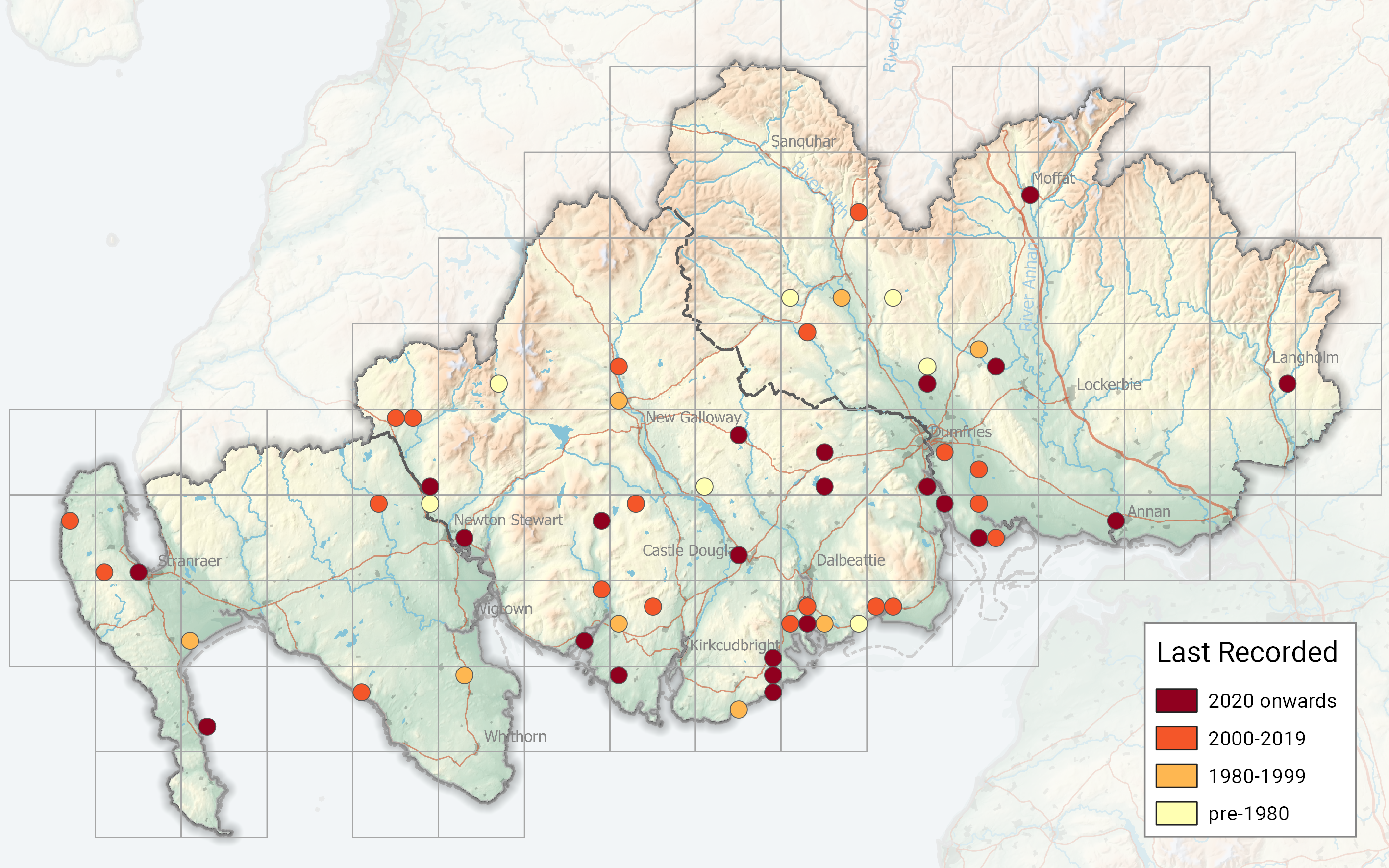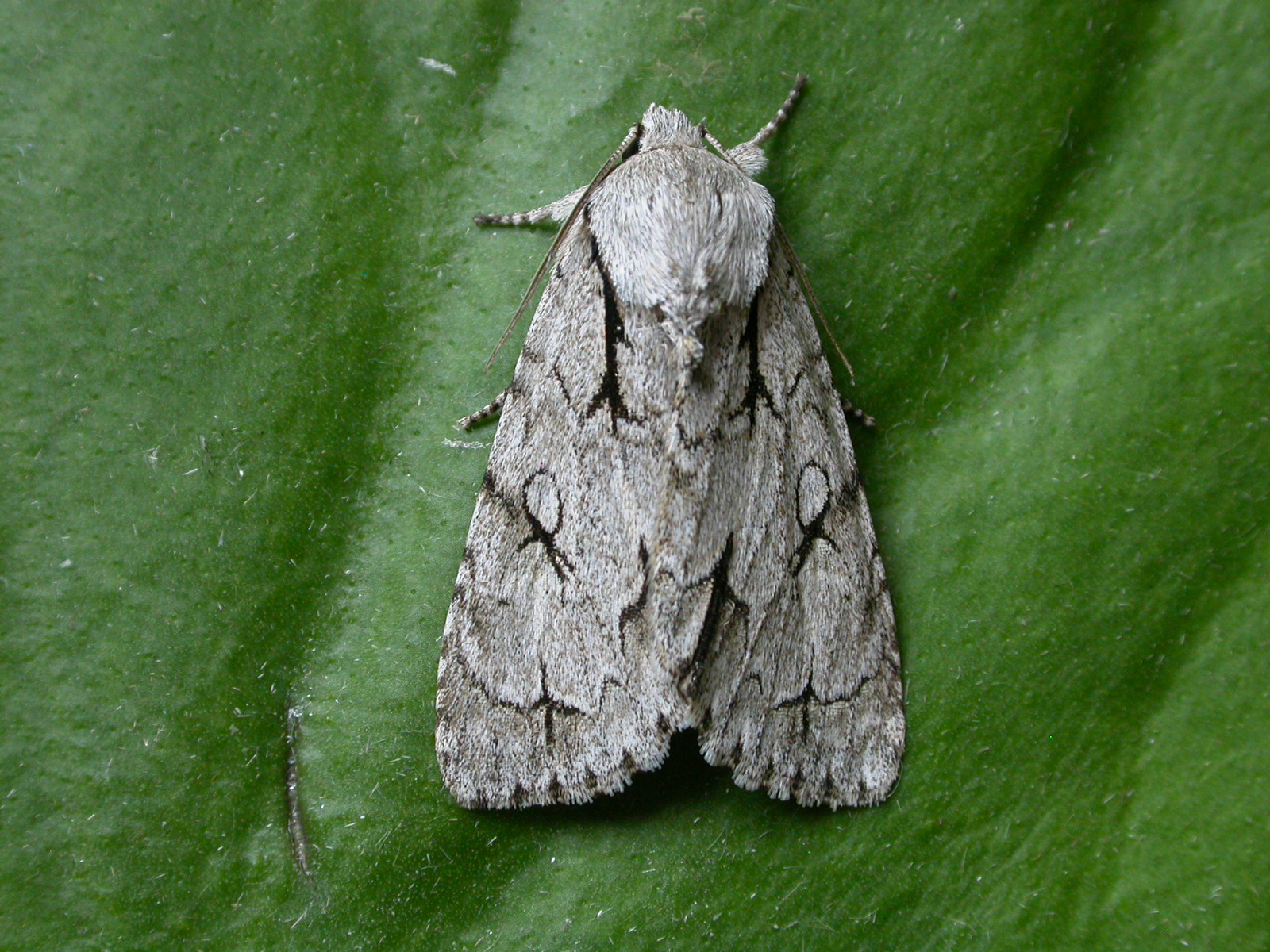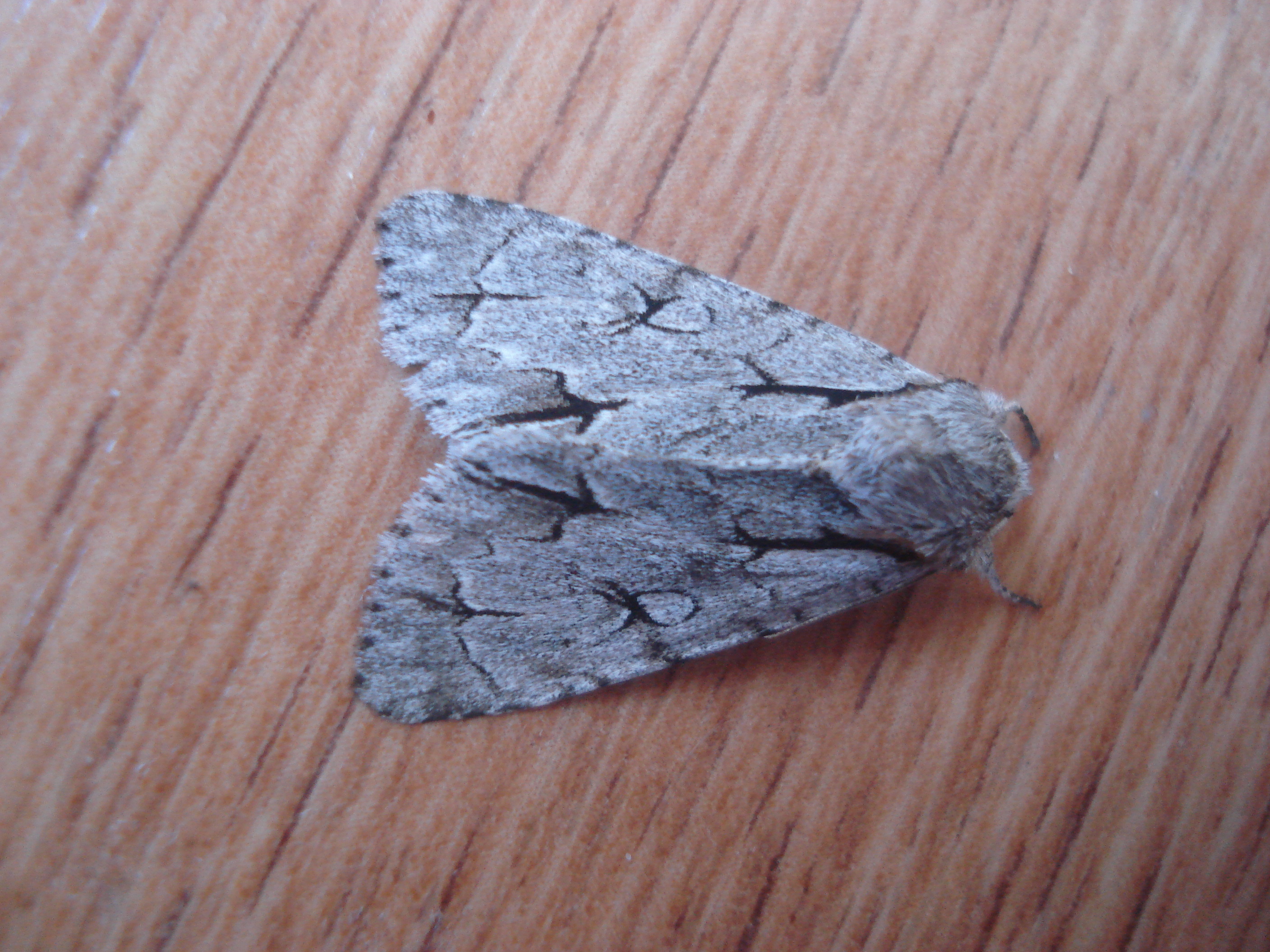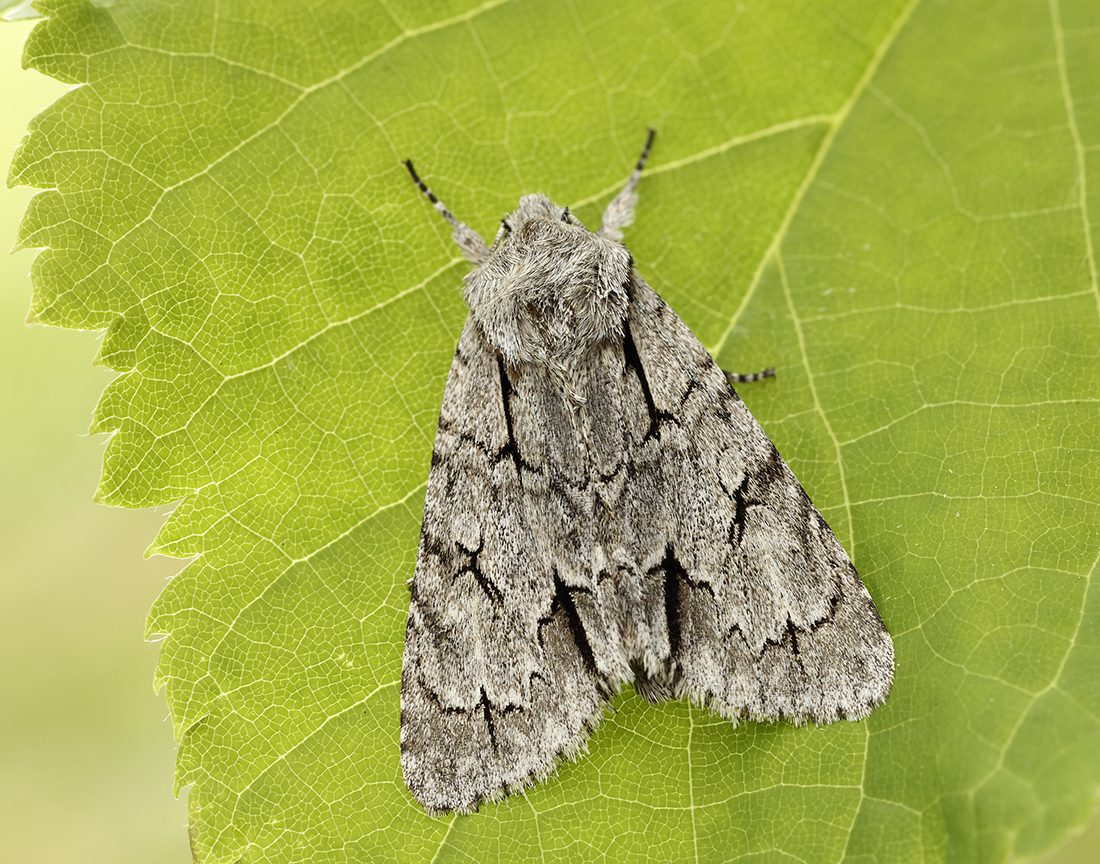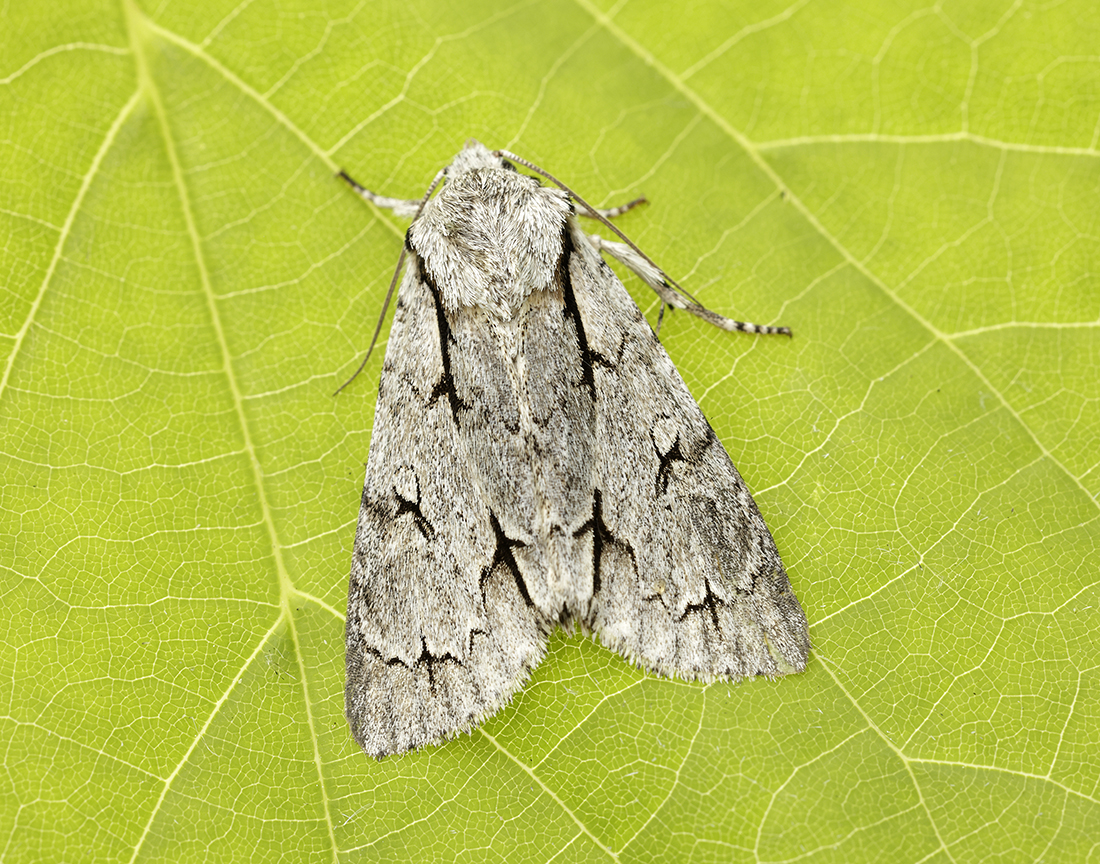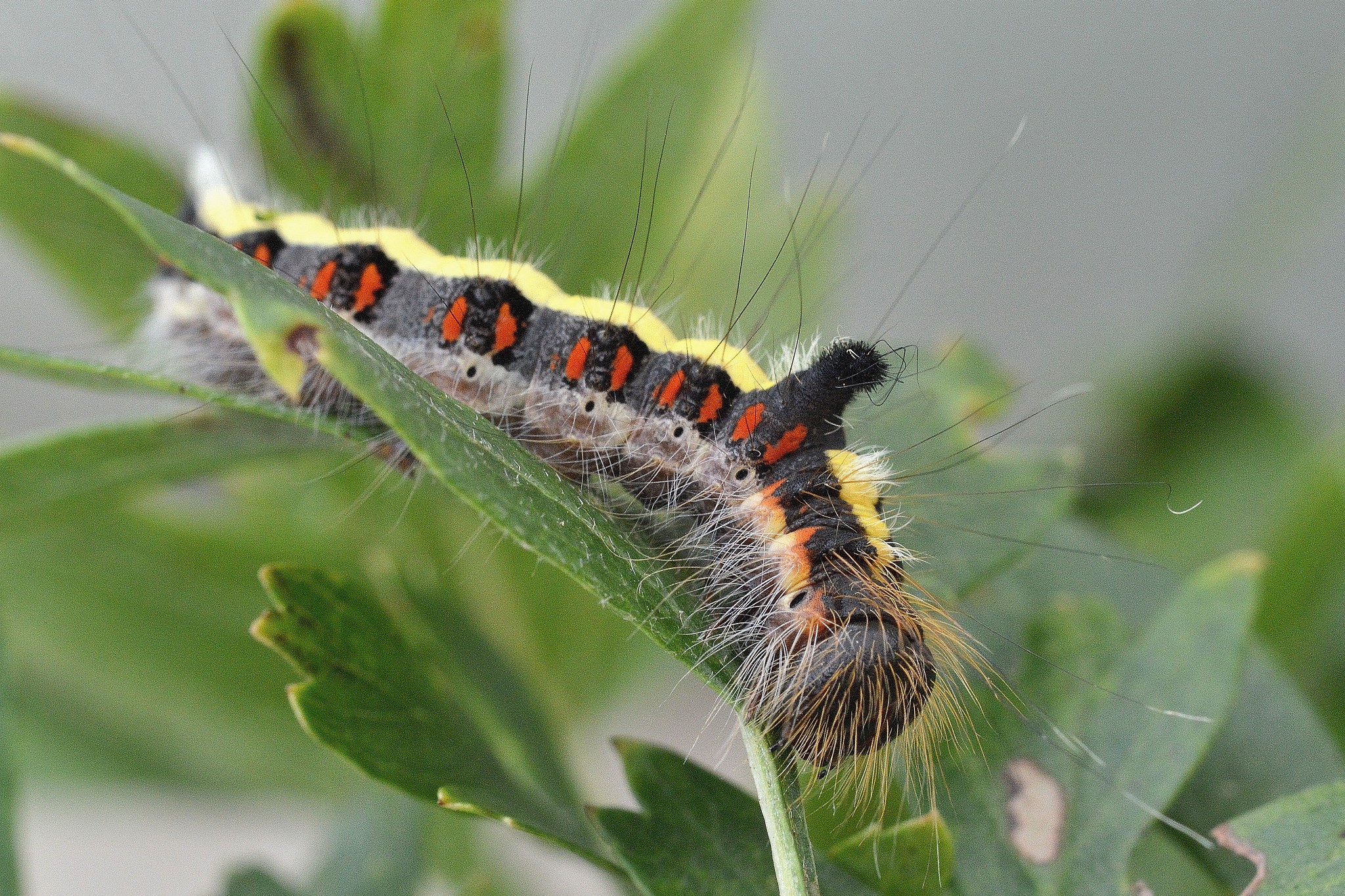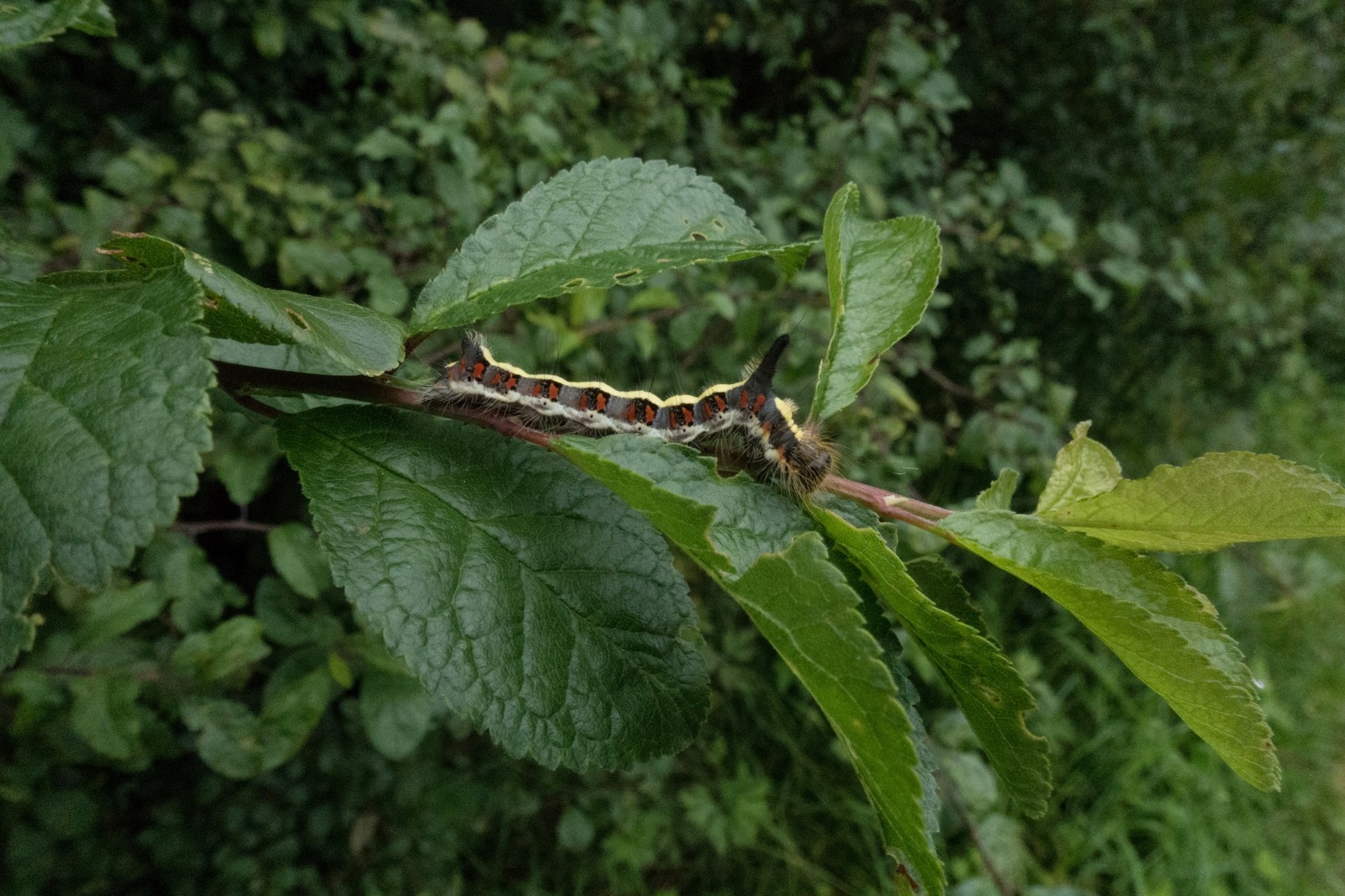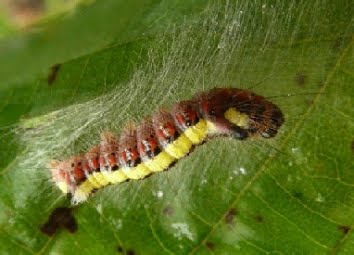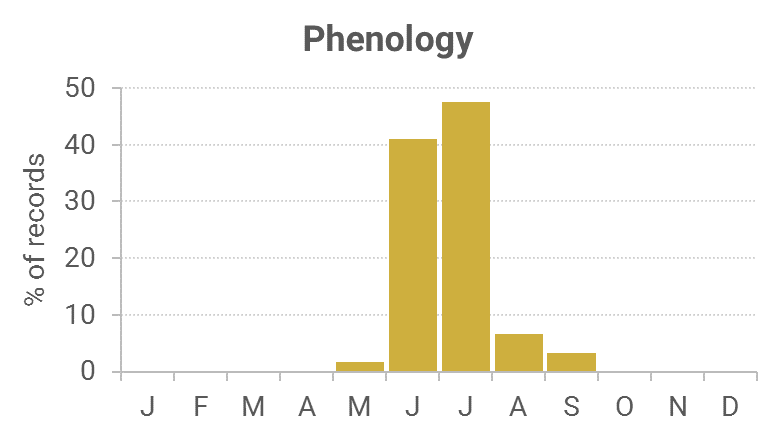Identification
Virtually identical to Dark Dagger and cannot be distinguished by external features. Genital examination is required to separate the two species. However, Dark Dagger has yet to be identified in Scotland so it might be assumed all in D&G are Grey Dagger. The larvae of the two species are quite different and each distinctive.
Recording Method.
Attracted to light and sugar.
Life cycle
One generation. Overwinters as a pupa. Larvae are present late July to early October.
Larval foodplants
A wide range of broadleaved trees and shrubs including Apple, Blackthorn, hawthorns, birches, limes and elms.
Habitat
Many habitats, but mainly woodland.
History
Lennon (1863) had stated it was common everywhere. Douglas Robinson (1870-71) had found a few at sugar in July on Almorness (VC73). He also found the larvae abundant in July and August. Gordon (1913) had stated it to be common and generally distributed; eight having been seen on one treacle patch at midnight 29th June 1905 at Corsemalzie, Wigtownshire.
Sir Arthur Duncan (1909-84) during his lifetime had found it at Closeburn, Tynron and Castlehill, Dumfries (all VC72). Archibald Russell (1944) listed it as occurring near Gatehouse of Fleet (VC73) during the years 1942-43.
The 1970s produced 20 records with a dip during the 1980s to 12 records, followed by a peak during the 1990s of 77, and during the first decade of the 21st century, a very similar level of 70 records. All were from widely scattered sites across the region.

